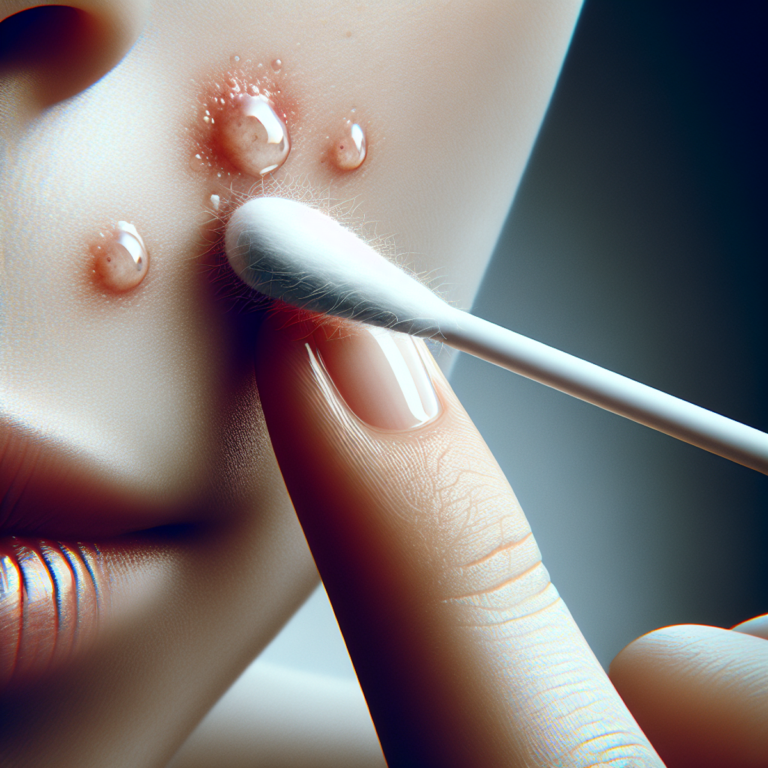Beginner’s Guide to Skin Care: How to Build Your Routine

Introduction
A skincare routine is essential for keeping your skin healthy and dealing with specific issues. In this guide, we’ll take you through the basic steps of a skincare routine that’s perfect for beginners. But before we get into that, it’s crucial to know your skin type. This knowledge will assist you in selecting the right products and adjusting your routine as needed.
Remember, everyone has a different skin type, and what works for one person may not work for another. So, it’s important to figure out your own skin type before starting your skincare routine. This way, you can choose products that are specifically designed for your needs.
The main goal of this guide is to equip you with the information and confidence necessary to begin and maintain a skincare routine that is tailored to your unique skin type and concerns. Let’s start this exciting journey towards healthier, happier skin!
Understanding Your Skin Type
Understanding your skin type is a crucial step in building an effective skincare routine. Different skin types have distinct characteristics and require specific products and treatments to maintain their health and balance. Here, we will explore the different skin types and provide methods for determining your own skin type.
1. Normal Skin
- Characteristics: Normal skin has a balanced moisture level, with a smooth texture and few blemishes or imperfections.
- Care: Normal skin types generally require minimal maintenance. However, it is still important to cleanse, moisturize, and protect the skin from UV rays.
2. Oily Skin
- Characteristics: Oily skin produces excess sebum, resulting in a shiny appearance, enlarged pores, and a tendency for breakouts.
- Care: To manage oily skin, it is important to choose products that control oil production without drying out the skin. Look for oil-free cleansers and lightweight moisturizers that are non-comedogenic.
3. Dry Skin
- Characteristics: Dry skin lacks moisture, often appearing flaky, rough, or dull. It can feel tight and may be prone to fine lines and wrinkles.
- Care: Hydration is key for dry skin. Choose gentle cleansers that do not strip away natural oils and opt for richer moisturizers that deeply hydrate the skin. Look for ingredients like hyaluronic acid and ceramides to help retain moisture.
4. Combination Skin
- Characteristics: Combination skin exhibits characteristics of both oily and dry skin. The T-zone (forehead, nose, and chin) tends to be oily, while the cheeks are drier.
- Care: Balancing combination skin involves using different products on different areas of the face. Consider using oil-free cleansers on the T-zone and hydrating products on the cheeks.
Determining your skin type at home can be done through visual observation and simple tests:
- Visual Observation: Start by examining your skin in natural lighting. Look for signs of oiliness, dryness, or a combination of both. Notice any areas that may be prone to breakouts, redness, or irritation.
- Blotting Paper Test: Gently pat a blotting paper on different areas of your face. If the paper picks up oil from all areas, you likely have oily skin. If there is minimal oil on the paper and your skin feels tight, you may have dry skin. Combination skin will show oiliness on the T-zone but less so on the cheeks.
Understanding your skin type will help guide your product selection and customization of your skincare routine. By choosing products specifically formulated for your skin type, you can address its unique needs and achieve optimal results in maintaining healthy and radiant skin.
The Essential Steps of a Beginner’s Skincare Routine
Step 1: Cleansing
Cleansing is a fundamental step in any skincare routine as it helps to remove dirt, oil, and impurities from the skin’s surface. It also eliminates any leftover products that can clog pores, leading to breakouts and dull skin.
Choosing the Right Cleanser
When selecting a cleanser, it’s essential to consider your skin type and specific concerns. For instance, individuals with oily skin may benefit from gel-based or foaming cleansers that can effectively control excess oil production. Conversely, those with dry or sensitive skin should opt for a hydrating, non-stripping cleanser to maintain the skin’s natural moisture barrier. You can refer to this guide on how to choose the right face wash or cleanser for your skin type for more insights.
Proper Cleansing Technique
To maximize the benefits of cleansing and minimize the risk of irritation, it’s crucial to follow a proper cleansing technique. Here’s how:
- Begin by wetting your face with lukewarm water.
- Apply a small amount of cleanser.
- Gently massage the cleanser into your skin using circular motions.
- After thoroughly cleansing the face, rinse off the cleanser with water.
- Gently pat your skin dry with a clean towel.
By incorporating an appropriate cleanser and adopting an effective cleansing routine tailored to your skin type, you can lay the foundation for healthy and radiant-looking skin.
Step 2: Moisturizing
Moisturizing is an essential part of any skincare routine. It helps to keep your skin hydrated, improve its texture, and strengthen its natural moisture barrier. Here are some key things to know about moisturizing:
Benefits of moisturizing
Moisturizers do more than just hydrate your skin. They also:
- Prevent dryness and flakiness
- Seal in moisture
- Create a protective layer on the surface of your skin
- Reduce water loss
- Maintain optimal hydration levels
- Improve overall skin texture
- Leave your skin soft, smooth, and supple
Choosing the right moisturizer
It’s important to choose a moisturizer that suits your specific skin type. Here are some tips:
- If you have oily or combination skin, go for lightweight gel or lotion formulas that won’t clog your pores or feel heavy on your skin.
- If you have dry skin, opt for richer creams that provide intense hydration. The American Academy of Dermatology has some great tips on selecting the right moisturizer for dry skin.
- Look for moisturizers that are oil-free and fragrance-free to minimize the risk of irritation.
Key ingredients to look for
When selecting a moisturizer, keep an eye out for these beneficial ingredients:
- Hyaluronic acid: A hydrating ingredient that attracts and retains moisture in the skin. This article on how to apply moisturizer provides more insight into the importance of hyaluronic acid.
- Ceramides: These help to strengthen your skin barrier and maintain its natural protective function.
- Other helpful ingredients include glycerin, niacinamide, and peptides.
The application technique
To make the most of your moisturizer, follow these steps:
- Cleanse your face thoroughly to remove dirt and impurities.
- Gently pat your skin dry with a clean towel, leaving it slightly damp. This helps to lock in moisture from the moisturizer.
- Take a small amount of product and warm it between your palms.
- Apply the moisturizer to your face using gentle upward motions.
- Don’t forget to include your neck and décolletage area.
- Allow the moisturizer to fully absorb before applying any other products.
Remember to be consistent with your moisturizing routine. Apply moisturizer in the morning and evening after cleansing to keep your skin hydrated all day and night.
Next, we’ll talk about another crucial step in skincare: protecting your skin from the sun’s harmful rays with sunscreen.
Step 3: Sunscreen Protection
Sunscreen plays a crucial role in protecting the skin from harmful UV rays, which is essential for preventing premature aging and reducing the risk of skin cancer. Here are some important points to consider when it comes to sunscreen protection in your skincare routine:
1. Emphasize the importance
Start by emphasizing the crucial role of sunscreen in overall skin health. Explain that UV rays can cause damage to the skin, leading to wrinkles, sunspots, and an increased risk of skin cancer. By incorporating sunscreen into your daily routine, you are taking a proactive step towards protecting your skin.
2. Understanding SPF and PA rating
Educate readers about SPF (Sun Protection Factor) and PA rating. SPF indicates the level of protection against UVB rays, while PA rating measures protection against UVA rays. Encourage readers to choose a sunscreen with an SPF of 30 or higher and a high PA rating for broad-spectrum coverage.
3. Choosing the right sunscreen
Provide guidance on selecting a sunscreen product that offers adequate protection for your skin type and concerns. For example, those with oily or acne-prone skin may prefer a lightweight, non-greasy formula, while those with dry skin may benefit from a moisturizing sunscreen. Highlight key ingredients such as zinc oxide or titanium dioxide for physical sunscreens or avobenzone or oxybenzone for chemical sunscreens.
4. Proper application technique
Guide readers on how to apply sunscreen correctly for maximum effectiveness. Remind them to apply it generously to all exposed areas of the body, including the face, neck, ears, and hands. Encourage gentle patting or massaging motions to ensure even distribution and absorption.
5. Reapplication throughout the day
Stress the importance of reapplying sunscreen throughout the day for continuous protection. Advise readers to reapply every two hours or immediately after swimming or excessive sweating. Suggest setting reminders or keeping a travel-sized sunscreen in their bag for easy reapplication.
Overall, integrating sunscreen protection into your skincare routine is essential for maintaining healthy and youthful-looking skin. By understanding the role of sunscreen, choosing the right product, and applying it correctly, you can safeguard your skin from the damaging effects of UV rays. Make sunscreen a non-negotiable step in your daily routine to ensure optimal skin health.
Enhancing Your Routine with Advanced Steps (Optional)
As you become more comfortable with the basic steps of your skincare routine, you may want to consider incorporating some advanced steps to further enhance the health and appearance of your skin. These additional steps can target specific concerns and provide extra nourishment for your skin. Here are two advanced steps that you can consider adding to your routine:
Exfoliation
Exfoliation is a vital step in any skincare routine as it helps to remove dead skin cells, unclog pores, and improve overall skin texture. By promoting cell turnover, exfoliation reveals fresh and radiant skin underneath. However, it is important to approach exfoliation with caution as over-exfoliating can lead to irritation and sensitivity. Here are some key points to keep in mind:
- Benefits of Exfoliation: Exfoliating the skin offers several benefits, including:
- Removal of dead skin cells: Dead skin cells can accumulate on the surface of the skin, leading to a dull complexion. Exfoliation helps to slough off these dead cells, revealing brighter and smoother skin.
- Improved texture: Regular exfoliation can help improve the texture of your skin by reducing roughness and promoting a smoother appearance.
- Promotion of cell turnover: Exfoliation stimulates the production of new skin cells, resulting in a fresher and more youthful complexion.
- Gentle Exfoliation Methods/Products: For beginners, it is recommended to start with gentle exfoliation methods/products to avoid irritation. Chemical exfoliants such as alpha hydroxy acids (AHAs) or beta hydroxy acids (BHAs) are effective options. AHAs like glycolic acid or lactic acid work on the surface of the skin, while BHAs like salicylic acid penetrate deeper into the pores. These chemical exfoliants dissolve the bonds between dead skin cells, allowing them to be easily sloughed away.
- Frequency of Exfoliation: The frequency of exfoliation depends on your skin type and sensitivity. For most people, exfoliating 1-2 times a week is sufficient. However, individuals with sensitive or dry skin may need to exfoliate less frequently to avoid irritation. It’s important to listen to your skin and adjust the frequency as needed.
Serums
Serums are lightweight skincare products that contain high concentrations of active ingredients. These potent formulations are designed to target specific skin concerns and deliver noticeable results. Adding a serum to your skincare routine can provide an extra boost of nourishment and address specific issues you may be facing. Here are some key points about serums:
- Role of Serums: Serums are formulated with a high concentration of active ingredients such as antioxidants, vitamins, peptides, and hyaluronic acid. These ingredients penetrate deeper into the skin to address specific concerns such as fine lines, hyperpigmentation, or uneven texture.
- Choosing the Right Serum: When selecting a serum, consider your specific skin concerns and choose a product that targets those issues. For example:
- Vitamin C serums: These serums help brighten the complexion, even out skin tone, and reduce the appearance of dark spots.
- Hyaluronic acid serums: These serums provide intense hydration and plumpness to the skin, reducing the appearance of fine lines and wrinkles.
- Retinol serums: Retinol is a powerful ingredient that helps improve skin texture, reduce the signs of aging, and promote cell turnover.
- Incorporating Serums into Your Routine: Serums should be applied after cleansing and toning but before moisturizing. Due to their lightweight texture, they are easily absorbed by the skin. Apply a few drops of serum onto clean fingertips and gently pat it onto your face, focusing on areas of concern. Follow with your regular moisturizer to seal in the active ingredients.
Including these advanced steps in your skincare routine can take it to the next level and address specific concerns you may have. However, it’s important to remember that simplicity is key. Don’t overwhelm your skin with too many products or steps. Start with one advanced step at a time and observe how your skin responds. Always listen to your skin and adjust your routine as needed.
Remember, building a skincare routine is a journey, and it may take some time to find the perfect combination of products and steps that work for you. Be patient, consistent, and always prioritize the health and well-being of your skin.
Serums
Serums are an essential step in an advanced skincare routine. While not necessary for beginners, they can provide targeted benefits and address specific skin concerns. These lightweight formulas contain highly concentrated ingredients that penetrate deep into the skin, delivering potent nutrients and active compounds. Here’s a closer look at the role of serums in your skincare routine:
1. Delivering Concentrated Ingredients
Serums are formulated with a high concentration of active ingredients such as antioxidants, vitamins, peptides, and hyaluronic acid. These ingredients work together to address specific concerns like brightening, hydration, anti-aging, or acne. Unlike moisturizers or cleansers, serums have smaller molecules that can penetrate deeper into the skin, allowing for better absorption and effectiveness.
2. Targeting Specific Concerns
The beauty of serums lies in their ability to target specific skin concerns. For example, if you’re looking to brighten your complexion and reduce the appearance of dark spots or hyperpigmentation, a vitamin C serum would be ideal. On the other hand, if you’re concerned about dryness and dehydration, a hyaluronic acid serum can provide intense hydration by attracting and retaining moisture in the skin.
3. Incorporating Serums Into Your Routine
When adding serums to your skincare routine, it’s important to layer them correctly to maximize their benefits. Here’s a suggested order:
- Cleansing: Start by cleansing your face to remove any dirt, oil, or impurities. This ensures that the serums can penetrate the skin effectively.
- Toning (optional): If you use a toner, apply it after cleansing and before applying your serum. Toners help balance the skin’s pH levels and prepare it for better absorption of subsequent products.
- Serum: Apply a few drops of serum onto clean, dry skin. Gently massage it into your face and neck using upward motions. Allow the serum to absorb fully before moving on to the next step.
- Moisturizer: Once the serum has absorbed, follow up with a moisturizer to lock in hydration and provide an additional layer of protection. Choose a moisturizer that complements the benefits of your serum and is suitable for your skin type.
4. Layering with Other Products
It’s important to note that serums should be applied before heavier creams or oils in your routine. This allows them to penetrate deeply into the skin without any barriers. If you’re using multiple serums, apply them in order from thinnest to thickest consistency.
Remember, while serums can be a valuable addition to your skincare routine, it’s crucial not to overwhelm your skin with too many products at once. Start with one serum targeting your primary concern and gradually introduce others if needed. Pay attention to how your skin reacts and adjust accordingly.
Masks
While it’s not necessary, there are some advanced skincare steps that can be really helpful once you’ve got the basics down. One of these steps is using masks.
How masks can benefit your skin
Masks are a great way to give your skin some extra love and attention. They can provide additional nourishment, hydration, or treatment benefits depending on their formulations. For example:
- Clay masks are perfect for detoxifying the skin and drawing out impurities.
- Sheet masks are super hydrating and can give your skin a boost of moisture.
How often should you use masks?
The frequency of mask usage depends on your skin type and concerns. As a general guideline:
- Dry or sensitive skin: 1-2 times a week
- Normal or combination skin: 2-3 times a week
- Oily or acne-prone skin: 3-4 times a week
When to use masks in your skincare routine
The best time to use a mask is after cleansing and toning, but before applying any serums or moisturizers. This allows the mask to directly contact your skin and work its magic without any barriers.
Adding a simple face mask is an optional step in your skincare routine. If you enjoy using them and find that they benefit your skin, then go ahead and incorporate them into your routine! However, it’s important to keep in mind that they are not necessary for everyone and should be used based on individual preferences and skin needs.
Keeping It Simple and Consistent
When it comes to building a skincare routine, simplicity and consistency are key. Rather than overwhelming yourself with too many products or complex steps, it’s important to focus on establishing a routine that you can stick to and maintain over time. Here are some tips to help you keep your skincare routine simple and consistent:
Prioritize Consistency
Consistency is more important than having an elaborate routine. It’s better to perform a simple routine consistently rather than sporadically using a vast array of products. Consistency allows your skin to adapt and benefit from the products you’re using.
Start with the Basics
Begin with the essential steps of cleansing, moisturizing, and sunscreen protection. These three steps form the foundation of a good skincare routine and can make a significant difference in the health and appearance of your skin.
Choose Multi-purpose Products
Look for products that serve multiple purposes to simplify your routine. For example, opt for a moisturizer with added SPF to combine hydration and sun protection in one step.
Listen to Your Skin
Pay attention to how your skin responds to the products you’re using. If you notice any irritation or sensitivity, consider simplifying your routine by eliminating unnecessary steps or products.
Be Patient
Building an effective skincare routine takes time, so be patient with the process. It may take several weeks or even months before you start seeing noticeable results. Stick with your routine and give it time to work its magic.
Remember, everyone’s skin is unique, so what works for one person may not work for another. It’s important to customize your routine based on your individual needs and preferences. As you become more familiar with your skin and its specific requirements, you can gradually introduce additional steps or products if desired.
By keeping your skincare routine simple and consistent, you’ll be able to establish healthy habits that will benefit your skin in the long run. So, focus on the basics, listen to your skin, and be patient – your skin will thank you for it!
Conclusion
Building a skincare routine is an essential step towards achieving healthy and glowing skin. By following the steps and guidelines provided in this guide, you can get started on a basic skincare routine that will cater to your skin’s needs.
Remember, consistency is key when it comes to skincare. Prioritize performing your skincare routine twice a day and be patient with the process. Your skin may take some time to show progress, but with dedication and the right approach, you will see results.
It is important to listen to your skin and make adjustments as necessary. Pay attention to how your skin reacts to different products and adjust your routine accordingly. If you experience any irritation or discomfort, consider consulting with a dermatologist for personalized advice.
Finally, building a skincare routine may seem overwhelming at first, especially if you are new to skincare. However, by understanding the basics and being consistent, you can achieve a healthy and glowing complexion in the long run.
So, go ahead and start your skincare journey today! Take care of your skin, nourish it with the right products, and enjoy the benefits of a well-rounded skincare routine.
“Investing in your skin is not just about looking good but also about feeling confident.”










